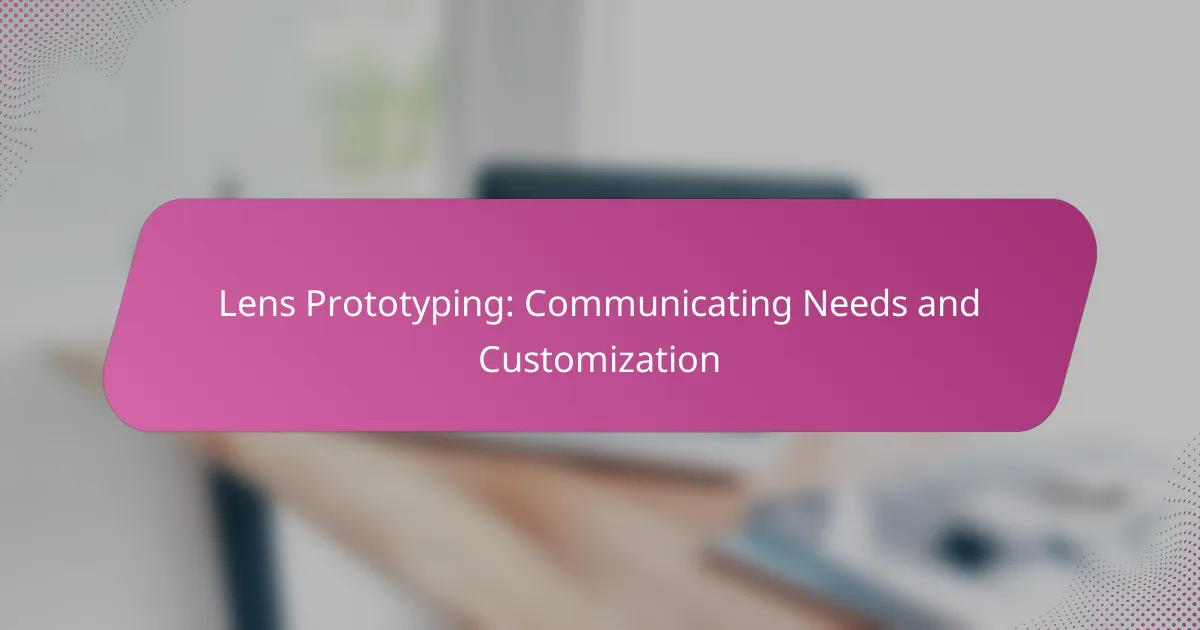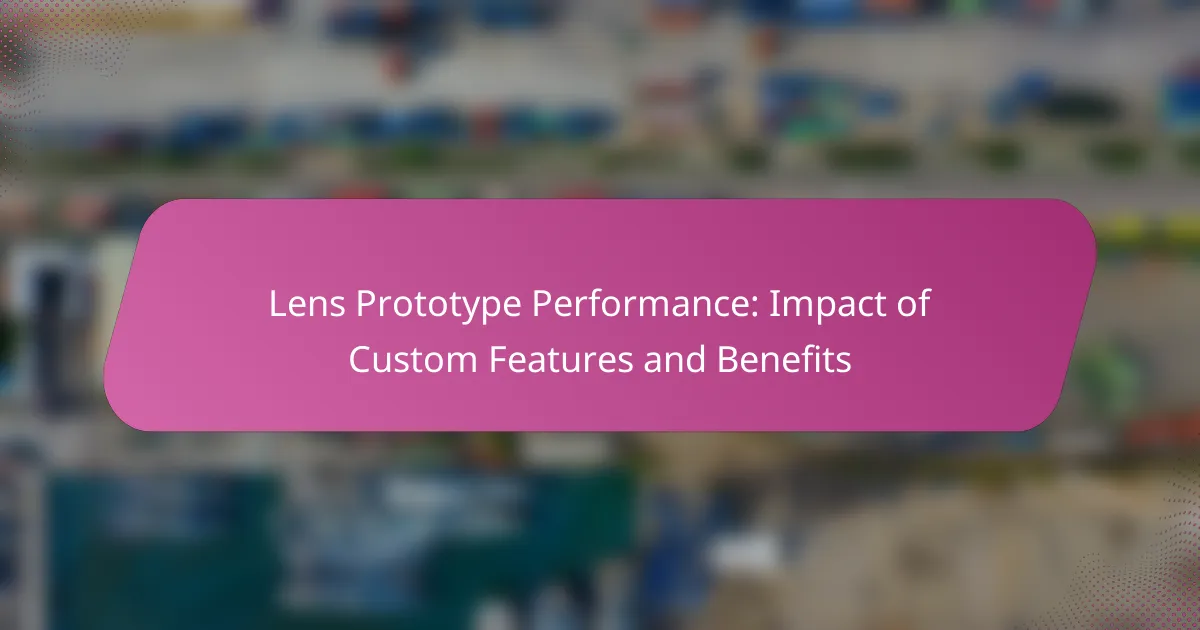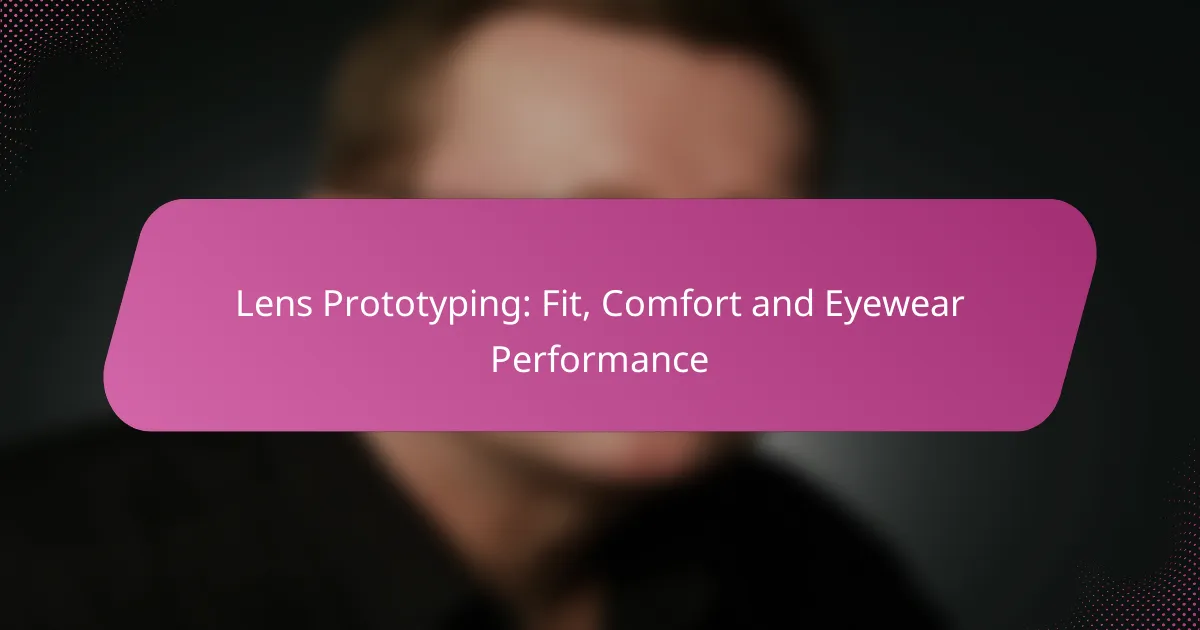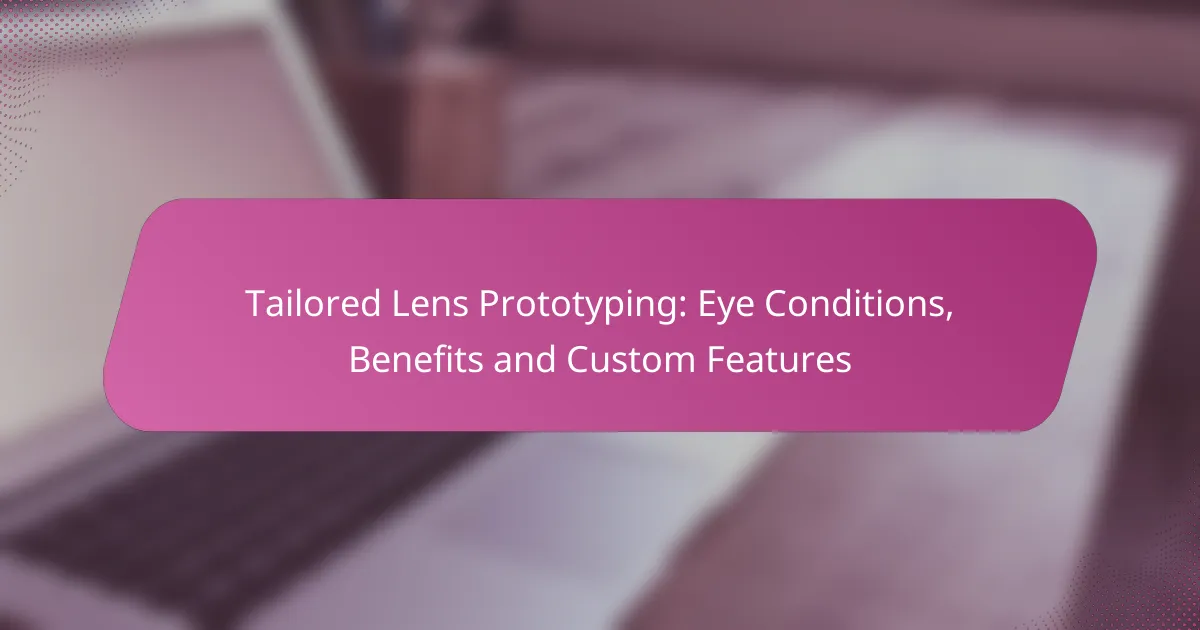Effective communication in lens prototyping is essential for aligning project requirements with user needs, ensuring that the final product meets expectations. By implementing best practices such as clear project briefs and regular feedback loops, designers can enhance collaboration and understanding. Additionally, customization plays a vital role in tailoring lenses to individual preferences, ultimately improving functionality and user satisfaction.
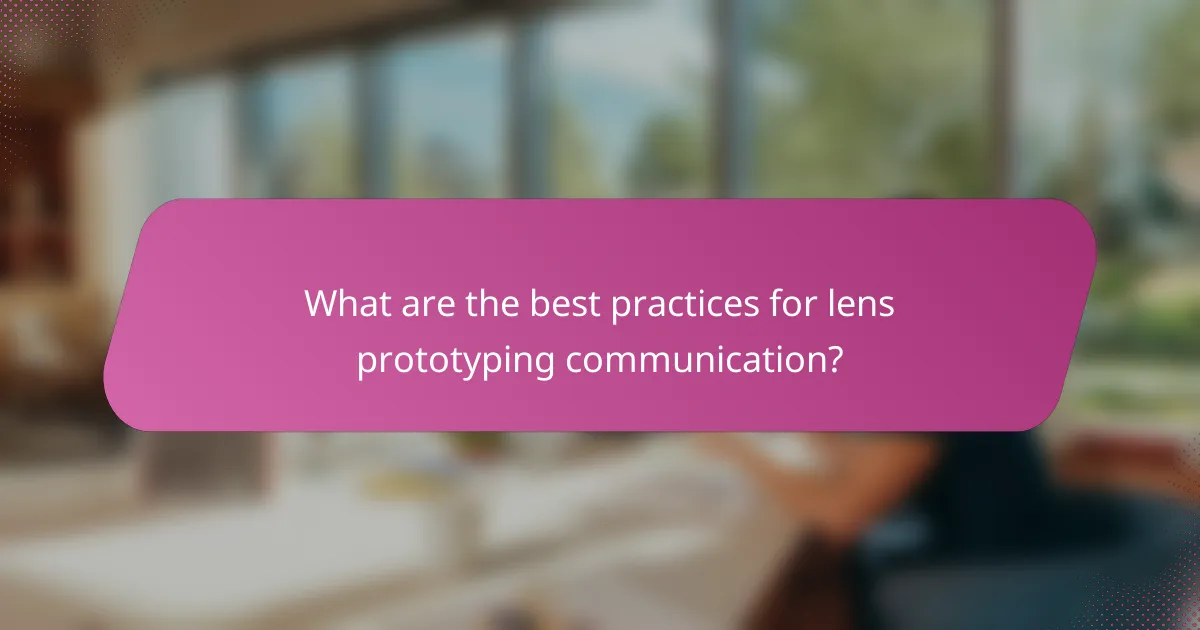
What are the best practices for lens prototyping communication?
Effective communication in lens prototyping is crucial for ensuring that project requirements are met and that the final product aligns with user needs. Best practices include creating clear project briefs, establishing regular feedback loops, and utilizing visual aids and mockups to enhance understanding.
Clear project briefs
Clear project briefs serve as the foundation for successful lens prototyping communication. They should outline the objectives, specifications, and constraints of the project, including material requirements and performance criteria. A well-structured brief helps all stakeholders understand the project’s scope and reduces the likelihood of miscommunication.
When drafting a project brief, consider including sections for target audience, design intent, and any regulatory standards that may apply. This ensures that everyone involved is aligned on expectations and can reference the same document throughout the development process.
Regular feedback loops
Establishing regular feedback loops is essential for refining lens prototypes and addressing issues promptly. Frequent check-ins allow team members to share insights, discuss challenges, and make adjustments based on user testing or technical evaluations. This iterative process can significantly enhance the quality of the final product.
Consider scheduling weekly or bi-weekly meetings to review progress and solicit feedback from all stakeholders. This practice not only fosters collaboration but also helps to identify potential problems early, saving time and resources in the long run.
Visual aids and mockups
Utilizing visual aids and mockups can greatly improve communication during the lens prototyping process. These tools provide tangible representations of concepts, making it easier for team members to visualize the end product and understand design choices. Mockups can range from simple sketches to detailed 3D models, depending on the project’s complexity.
Incorporate visual aids at various stages of development to facilitate discussions and gather feedback. For instance, presenting a mockup during a feedback session can help clarify ideas and ensure that everyone is on the same page regarding design and functionality. This approach minimizes misunderstandings and aligns expectations among stakeholders.
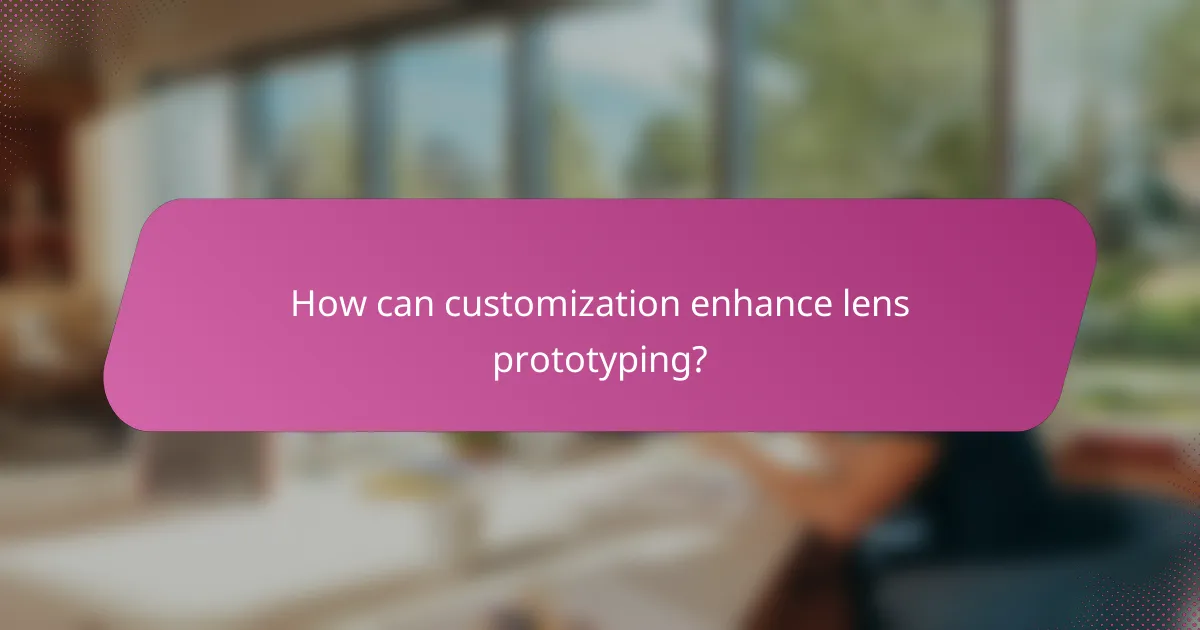
How can customization enhance lens prototyping?
Customization significantly enhances lens prototyping by allowing designers to meet specific user needs and preferences. Tailoring lenses to individual requirements can improve functionality, comfort, and overall satisfaction.
Tailored specifications
Tailored specifications involve adjusting the physical and optical properties of lenses to match user requirements. This can include variations in curvature, thickness, and material type. For example, a sports eyewear prototype may require impact-resistant materials and a wraparound shape for better peripheral vision.
When defining specifications, consider the intended use of the lenses. For instance, prescription lenses must meet specific refractive indices and coatings to ensure clarity and protection. Collaborating with optometrists can help refine these specifications effectively.
Adjustable parameters
Adjustable parameters in lens prototyping refer to the ability to modify design elements based on feedback and testing. Parameters such as tint, polarization, and anti-reflective coatings can be adjusted to enhance performance. For example, sunglasses may feature varying levels of UV protection based on user preferences and environmental conditions.
Utilizing software tools for simulation can help visualize how changes in parameters affect lens performance. This iterative process allows for rapid prototyping and testing, ensuring that the final product meets user expectations.
Client collaboration
Client collaboration is crucial in the lens prototyping process, as it ensures that the final product aligns with user needs. Engaging clients early in the design phase allows for valuable input on specifications and preferences. Regular feedback sessions can help identify areas for improvement and adjustments.
Consider using surveys or focus groups to gather insights from potential users. This approach can reveal preferences regarding style, comfort, and functionality, leading to a more successful prototype. Establishing clear communication channels throughout the process will facilitate a smoother collaboration and ultimately enhance the final product’s effectiveness.
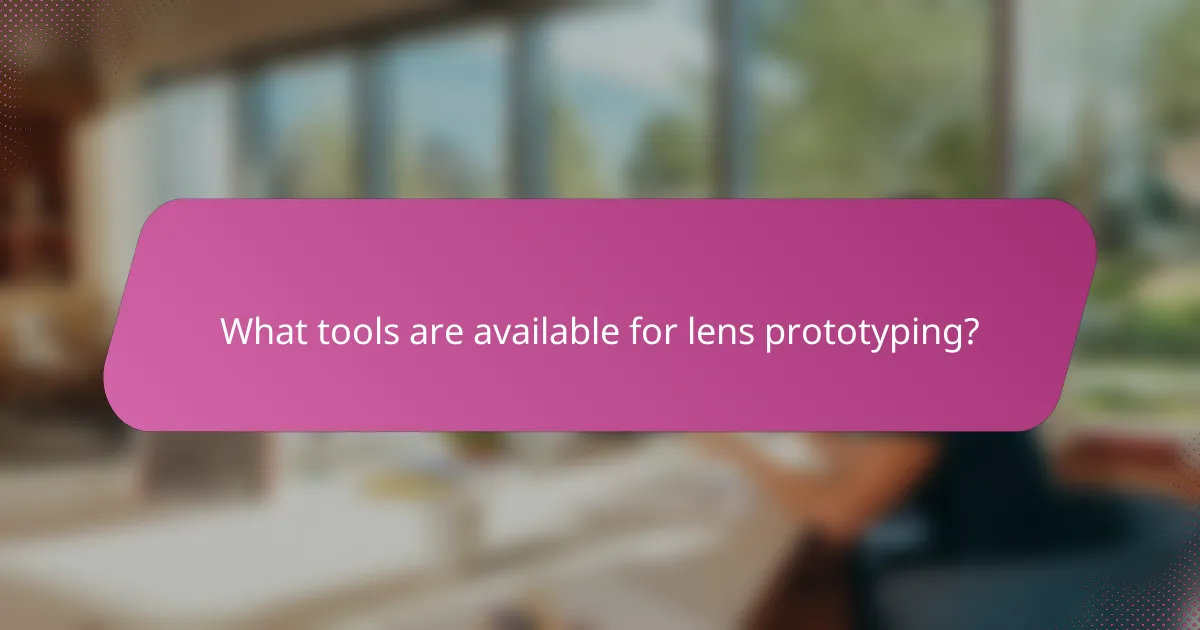
What tools are available for lens prototyping?
Several tools are available for lens prototyping, each serving distinct purposes in the design, simulation, and manufacturing processes. Utilizing the right combination of these tools can significantly enhance the efficiency and effectiveness of lens development.
SolidWorks for design
SolidWorks is a powerful CAD software widely used for designing optical components, including lenses. It allows designers to create detailed 3D models and assemblies, facilitating precise adjustments and iterations. Users can leverage its parametric design capabilities to quickly modify dimensions and features based on specific requirements.
When using SolidWorks, consider integrating optical design plugins that enhance its functionality for lens design. This can streamline workflows and improve accuracy in modeling complex geometries. Regularly validating designs against optical performance criteria is crucial to ensure that the final product meets specifications.
OptiFDTD for simulation
OptiFDTD is a simulation tool that employs finite-difference time-domain methods to analyze the optical behavior of lenses. It allows users to simulate light propagation through various lens designs, helping to predict performance metrics such as focus and aberrations. This tool is essential for optimizing designs before physical prototyping.
To maximize the benefits of OptiFDTD, ensure that you have a clear understanding of the material properties and environmental conditions that will affect lens performance. Running multiple simulations with varying parameters can provide insights into the most effective design choices and reduce the risk of costly errors in later stages.
3D printing technologies
3D printing technologies have revolutionized lens prototyping by enabling rapid production of complex shapes and geometries. Techniques such as stereolithography (SLA) and selective laser sintering (SLS) allow for the creation of high-precision lens prototypes in a fraction of the time compared to traditional manufacturing methods.
When selecting a 3D printing method, consider the material properties and resolution required for your lens application. For optical components, high-resolution printers that can handle clear or translucent materials are ideal. Always conduct thorough testing of 3D printed prototypes to ensure they meet optical performance standards before moving to mass production.

What are the common challenges in lens prototyping?
Common challenges in lens prototyping include communication gaps, technical limitations, and budget constraints. These issues can hinder the development process and affect the final product’s quality and functionality.
Communication gaps
Communication gaps often arise between designers, engineers, and clients, leading to misunderstandings about project requirements. Clear documentation and regular updates are essential to ensure everyone is aligned on objectives and specifications.
To mitigate these gaps, consider implementing collaborative tools that allow for real-time feedback and visual references. Regular meetings can also help clarify expectations and address any concerns promptly.
Technical limitations
Technical limitations can impact the feasibility of certain lens designs, particularly when it comes to material properties and manufacturing capabilities. Understanding the constraints of available technologies is crucial for realistic prototyping.
When selecting materials and processes, consult with manufacturers to identify what is achievable within your design parameters. This collaboration can help avoid costly revisions later in the project.
Budget constraints
Budget constraints are a significant factor in lens prototyping, influencing material choices, design complexity, and production methods. It is important to establish a clear budget early in the project to guide decision-making.
To manage costs effectively, prioritize features that deliver the most value and consider phased development. This approach allows for incremental investment and testing, reducing the risk of overspending on unproven concepts.
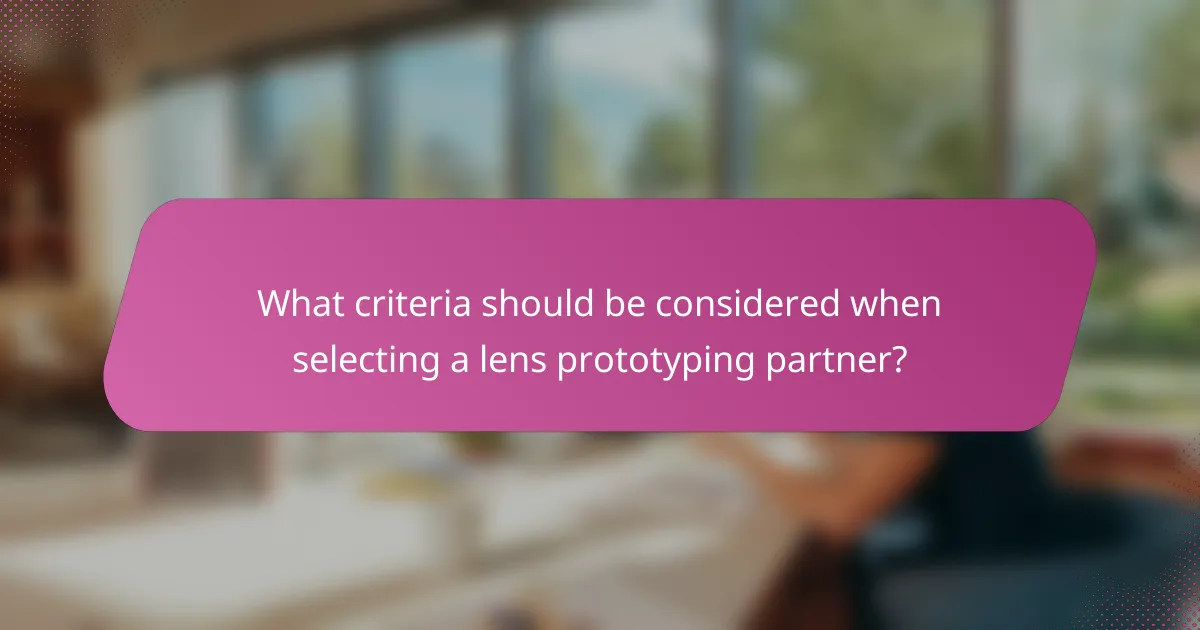
What criteria should be considered when selecting a lens prototyping partner?
When selecting a lens prototyping partner, consider their experience, expertise, and technology capabilities. These factors are crucial for ensuring that your specific needs are met efficiently and effectively.
Experience and expertise
Evaluate the partner’s experience in lens prototyping, particularly in your industry or application area. A partner with a proven track record can provide insights that enhance the design process and reduce development time.
Look for partners who have worked on similar projects and can demonstrate their ability to solve common challenges. This might include familiarity with specific materials or design requirements relevant to your lenses.
Technology capabilities
Assess the technological tools and equipment the partner uses for lens prototyping. Advanced machinery and software can significantly impact the precision and quality of the final product.
Consider whether the partner employs techniques such as 3D printing or CNC machining, which can offer flexibility in design iterations. Ensure they can accommodate your customization needs, whether for small batches or larger production runs.
